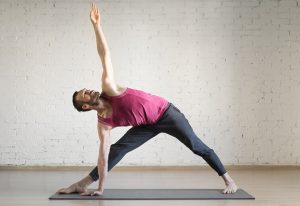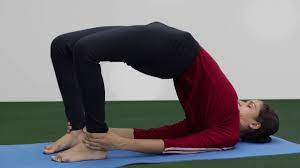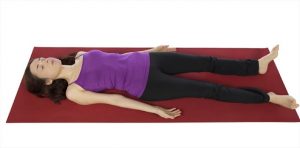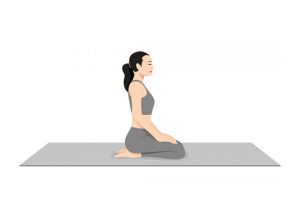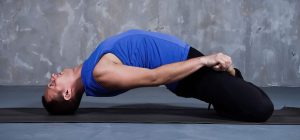ARTHRITIS – YOGA ASANAS
- December 23, 2022
- Posted by Dr. Vaidya Karanvir Singh
- 0 Comment(s)
Table of Contents
INTRODUCTION
Arthritis is a medical condition in which there occurs inflammation of one or more joints of the body. Ligaments, capsule of the joint and surrounding connective tissues are also involved in arthritis. Arthritis can affect any joint of body such as wrist joint, knee joint, hip joint, etc. Osteoarthritis, rheumatoid arthritis and gout are the more common forms of arthritis. The common symptoms of arthritis include swelling of joint, stiffness and pain in the affected joint.
There are several treatment options available for arthritis. Different types of medicines are given along with dietary and lifestyle changes. Surgery is recommended as the last option.
WHAT ARE THE CAUSES OF ARTHRITIS?
Arthritis is caused by several factors. Following are the causes of arthritis:
- Having a family history of arthritis
- Having a physical injury to the joint
- Abnormal functioning of the immune system
- Defaulting metabolism of body
- Obesity
- Weakened immune system
- Increasing age
DIFFERENT TYPES OF ARTHRITIS
Arthritis is of various types depending on the cause and joint involved:
- Rheumatoid arthritis
- Osteoarthritis
- Gout
- Spondylosis
- Septic arthritis
- Psoriatic arthritis
- Thumb arthritis
- Juvenile idiopathic arthritis
WHAT ARE THE SIGNS AND SYMPTOMS OF ARTHRITIS?
Each form of arthritis has some of its specific symptoms but they have some of the symptoms in common. Following are the basic signs and symptoms of arthritis:
- Swelling in the concerned joint
- Joint stiffness
- Pain and redness in joint
- Decreased range of movement of joint
HOW ARTHRITIS CAN BE PREVENTED?
Arthritis can be prevented by following some of the dietary and lifestyle modifications:
- Regular physical exercise
- Eating nutritious diet
- Avoid smoking
- Say no to tobacco products
- No alcohol intake
- Yoga
HOW YOGA CAN BE HELPFUL IN MANAGING ARTHRITIS?
Now-a-days arthritis has become very common. Every third person is affected from it. Arthritis word is an umbrella term for various diseases in which there is inflammation of joints. Yoga can be very helpful in managing the symptoms of arthritis and preventing it also. Here are some of the yoga asanas which can be beneficial in them:
1. TRIKONASANA
Trikonasana is called triangle pose also. It leads to stretching of legs and torso. It opens up chest space and promotes effect of deep breathing.
How to do it:
- Stand with the feet wide apart. Then stretch the right foot outwards while keeping the leg closer to the torso.
- Keep the feet firmly on the ground and balance the weight equally on both the feet. Then bend the right arm and touch the ground. Meanwhile, the left arm goes up.
- The waist should be kept straight. The body should bend sideways and not forwards and backwards.
- Repeat the same procedure on the other side also.
Contraindications:
- Neck pain
- Headache
- Insomnia
- Pregnancy
- Diarrhea
2. SETUBHANDASANA
It is also known as bridge pose. In this asana, there occurs stretching of chest, neck, back muscles and spine. It is very helpful in relieving back pain and helps in strengthening of bones.
How to do it:
- Lie on the back on the floor
- Press onto the feet and slightly lift the hips upwards. You can slide a yoga block under them for giving support.
- During relaxing, remove the yoga block and bring the legs and hips down on the floor.
Contraindications:
- Pregnancy
- Neck injury
- Stomach ulcers
- Hernia
3. SHAVASANA
Shava means corpse and asana means body posture. Shavasana is also known as corpse pose. This asana is a rest and relaxation posture. It is usually performed at the end of a yoga session. It helps in deep healing of the body.
How to do it:
- Lie flat on the back without any cushions or props. Close your eyes.
- Keep the legs apart comfortably and let the feet and knees relax.
- The arms should be kept aside with a little distance from the body. Keep the palms open and facing upwards.
- Breathe slowly and gently and slowly relax your entire body. Surrender the whole body and let go everything. But do not fall asleep.
- After 10-20 minutes, slowly roll onto the right side and remain in that position for a minute. Then with the help of the right hand, sit up into a seated posture known as sukhasana.
4. VAJRASANA
Vajra means diamond or thunderbolt and asana means body posture. So vajrasana is thunderbolt pose. It is also known as adamantine pose.
How to do it:
- Sit with the legs stretched straight in front.
- Fold both the legs and sit in a kneeling position. Hips are placed on the heels and toes are pointed behind. Big toes should touch each other.
- Head, neck and spine should be kept in straight line. Place the palms on thighs and face upwards.
- Now exhale and inhale. Beginners can hold the pose for 30 sec whereas experts can hold for a few minutes. After that, straighten your legs.
Contraindications:
- Slipped disc
- Trouble in foot, ankle and knees
MATSYASANA
Matsyasana is the fish pose asana. If this asana is carried out in water, the body will float easily like a fish.
How to do it:
- Lie on back with feet together and hands relaxed.
- Place the hands under the hips and bring the elbows close to each other.
- Lift the head and chest up while breathing in.
- When the chest is elevated, lower the head backwards and touch floor with the top of the head.
- Hold the pose as long as a person feels comfortable.
Contraindications:
- High or low blood pressure
- Migraine
- Insomnia

Dr. Vaidya Karanvir Singh is the younger Vaidya in Chandigarh Ayurved & Panchakarma Centre. He is the fourth generation in his family who is practicing as a general consultant in Ayurved & Panchakarma treatment at Chandigarh. In his practice, he had treated more than 1 Lakh Plus patients worldwide.


